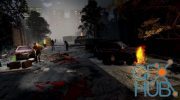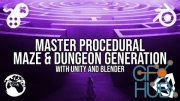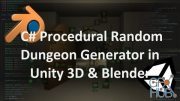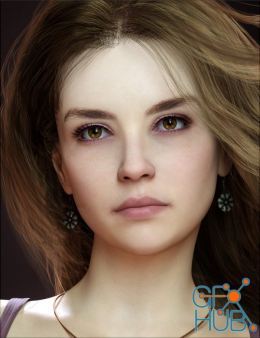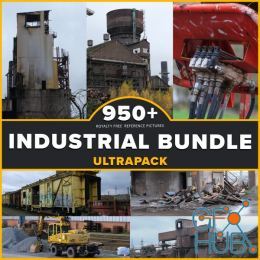Learn to Program & Model Procedural Cities in Unity/Blender
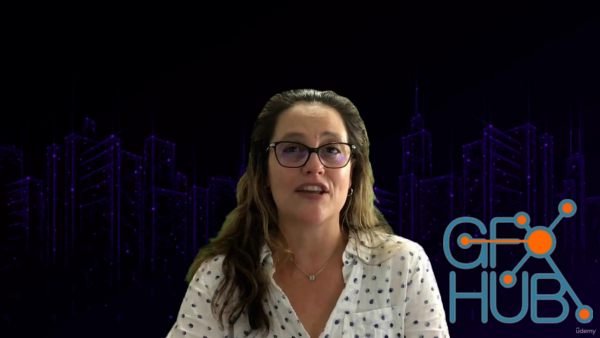
Download video course by Udemy – Learn to Program & Model Procedural Cities in Unity/Blender. Your guide to understanding procedural construction of buildings and city maps for games and virtual environments.
What you'll learn:
Explain the nature of 3D space and producing a grid for displaying and snapping 3D models together.
Identity several procedural algorithms that can be applied to generate virtual city maps.
Apply fractal and dynamic methods to algorithmically generate buildings and cities.
Create a bespoke procedurally generated city map complete with districts, population densities and vegetation.
Requirements
Knowledge of Blender and/or Unity required.
A Working Knowledge of C# in Unity (For Part B)
Description
Procedural generation in games and virtual environments lends itself to the algorithmic generation of infinitely unique computer-created experiences. Its potential lies in its ability to automatically develop digital content on demand, reducing the amount of work required by programmers and modellers. However, a lot of preparation is necessary for such a strategy to be implemented. A thorough understanding of the role that both sides of the game development coin (technical/logic and art/design) plays in procedural generation is key for a successful implementation. In this course, Penny and Mike bring a unique experience to both programmers and artists alike and combine their skills and many years of industry and academic knowledge to bring you a holistic learning experience, in which you will find content and invaluable mastery.
This course uses Unity 2020.3 and Blender 3.0 and is Windows and Mac compatible.
The content is presented in two parts which can be studied in any order, independently or together.
In Part A, Mike will be taking you through a series of stages, starting with blocking out your city with simple placeholders, a critical design step often overlooked. Taking those placeholders we add a little extra detail to start bringing the city to life and map out the road system properly. Once that warm-up is out of the way, Mike will start focusing on thinking in a more modular manner by looking at the fundamental building blocks required to make our assets. Then finally, we will move from placing the pieces manually to placing them automatically, first with Blender's Modifier Stack and finally completely procedurally using Blender 3.0's new Geometry Node system.
In Part B, Penny will begin by taking you through a variety of workshops using the Unity game development engine, to teaching you how to manipulate and position road models on a plane to create a city street map. Following this, algorithms will be worked through to create data structures to store city information and populate the city with residential, commercial, and industrial buildings. The commonly used algorithms for Voronoi Diagrams and Perlin Noise will be employed to calculate city zones and city population densities.
By the end of this course, you will have a professional toolkit of programming and modelling skills that will give you the advantage over others who are "just programmers" or "just modellers", including knowledge of multiple procedural techniques that can be employed in both Unity and Blender. Understanding game development that tightly integrates both design and logic from this standpoint is critical to making you a valuable commodity in the job market or preparing you for running an indie operation.
What others are saying about Penny's courses:
I do like Penny de Byl's courses and way of teaching, they are much more specific than your average "master Unity" kind of courses and usually, you don't learn just the engine but also how things work behind the scenes. She's really amazing!
I've been coding for about 3 years and since purchasing Penny's "Animation", and "Procedural Terrain" courses, the excitement and fun have returned once again to my programming.
Penny and her team know their stuff and are just amazing in explaining everything, breaking it down. Most importantly she challenges you to do stuff on your own rather than just "spoon-feeding" you everything. Then she comes back and shows you one way of doing it. Just an amazing course!!!
What others are saying about Mike's courses:
I've used Blender for a number of years, but I'm a total novice next to Mikey and I've learned so very much from him here!
Mikey is an amazing teacher, I can't praise this course highly enough. Worth every penny.
Mikey is a talented, thorough, and clear instructor, and he knows how to make the student think 'for themselves', which is such a great experience.
Who this course is for
Intermediate programmers and 3d artists interested in exploring procedural generation.
MP4 1280x720 | Total time: 13h 12m | ENG | SRT | Project Files Included | 10.8 GB
Download links:
Learn_to_Program___Model_Procedural_Cities_in_UnityBlender.part01.rar - 999.0 MB
Learn_to_Program___Model_Procedural_Cities_in_UnityBlender.part02.rar - 999.0 MB
Learn_to_Program___Model_Procedural_Cities_in_UnityBlender.part03.rar - 999.0 MB
Learn_to_Program___Model_Procedural_Cities_in_UnityBlender.part04.rar - 999.0 MB
Learn_to_Program___Model_Procedural_Cities_in_UnityBlender.part05.rar - 999.0 MB
Learn_to_Program___Model_Procedural_Cities_in_UnityBlender.part06.rar - 999.0 MB
Learn_to_Program___Model_Procedural_Cities_in_UnityBlender.part07.rar - 999.0 MB
Learn_to_Program___Model_Procedural_Cities_in_UnityBlender.part08.rar - 999.0 MB
Learn_to_Program___Model_Procedural_Cities_in_UnityBlender.part09.rar - 999.0 MB
Learn_to_Program___Model_Procedural_Cities_in_UnityBlender.part10.rar - 999.0 MB
Learn_to_Program___Model_Procedural_Cities_in_UnityBlender.part11.rar - 999.0 MB
Learn_to_Program___Model_Procedural_Cities_in_UnityBlender.part12.rar - 30.6 MB
Learn_to_Program___Model_Procedural_Cities_in_UnityBlender.part02.rar - 999.0 MB
Learn_to_Program___Model_Procedural_Cities_in_UnityBlender.part03.rar - 999.0 MB
Learn_to_Program___Model_Procedural_Cities_in_UnityBlender.part04.rar - 999.0 MB
Learn_to_Program___Model_Procedural_Cities_in_UnityBlender.part05.rar - 999.0 MB
Learn_to_Program___Model_Procedural_Cities_in_UnityBlender.part06.rar - 999.0 MB
Learn_to_Program___Model_Procedural_Cities_in_UnityBlender.part07.rar - 999.0 MB
Learn_to_Program___Model_Procedural_Cities_in_UnityBlender.part08.rar - 999.0 MB
Learn_to_Program___Model_Procedural_Cities_in_UnityBlender.part09.rar - 999.0 MB
Learn_to_Program___Model_Procedural_Cities_in_UnityBlender.part10.rar - 999.0 MB
Learn_to_Program___Model_Procedural_Cities_in_UnityBlender.part11.rar - 999.0 MB
Learn_to_Program___Model_Procedural_Cities_in_UnityBlender.part12.rar - 30.6 MB
Learn_to_Program___Model_Procedural_Cities_in_UnityBlender.part01.rar
Learn_to_Program___Model_Procedural_Cities_in_UnityBlender.part02.rar
Learn_to_Program___Model_Procedural_Cities_in_UnityBlender.part03.rar
Learn_to_Program___Model_Procedural_Cities_in_UnityBlender.part04.rar
Learn_to_Program___Model_Procedural_Cities_in_UnityBlender.part05.rar
Learn_to_Program___Model_Procedural_Cities_in_UnityBlender.part06.rar
Learn_to_Program___Model_Procedural_Cities_in_UnityBlender.part07.rar
Learn_to_Program___Model_Procedural_Cities_in_UnityBlender.part08.rar
Learn_to_Program___Model_Procedural_Cities_in_UnityBlender.part09.rar
Learn_to_Program___Model_Procedural_Cities_in_UnityBlender.part10.rar
Learn_to_Program___Model_Procedural_Cities_in_UnityBlender.part11.rar
Learn_to_Program___Model_Procedural_Cities_in_UnityBlender.part12.rar
Learn_to_Program___Model_Procedural_Cities_in_UnityBlender.part02.rar
Learn_to_Program___Model_Procedural_Cities_in_UnityBlender.part03.rar
Learn_to_Program___Model_Procedural_Cities_in_UnityBlender.part04.rar
Learn_to_Program___Model_Procedural_Cities_in_UnityBlender.part05.rar
Learn_to_Program___Model_Procedural_Cities_in_UnityBlender.part06.rar
Learn_to_Program___Model_Procedural_Cities_in_UnityBlender.part07.rar
Learn_to_Program___Model_Procedural_Cities_in_UnityBlender.part08.rar
Learn_to_Program___Model_Procedural_Cities_in_UnityBlender.part09.rar
Learn_to_Program___Model_Procedural_Cities_in_UnityBlender.part10.rar
Learn_to_Program___Model_Procedural_Cities_in_UnityBlender.part11.rar
Learn_to_Program___Model_Procedural_Cities_in_UnityBlender.part12.rar
Comments
Add comment
Tags
Archive
| « December 2025 » | ||||||
|---|---|---|---|---|---|---|
| Mon | Tue | Wed | Thu | Fri | Sat | Sun |
| 1 | 2 | 3 | 4 | 5 | 6 | 7 |
| 8 | 9 | 10 | 11 | 12 | 13 | 14 |
| 15 | 16 | 17 | 18 | 19 | 20 | 21 |
| 22 | 23 | 24 | 25 | 26 | 27 | 28 |
| 29 | 30 | 31 | ||||
Vote
New Daz3D, Poser stuff
New Books, Magazines
 2021-11-25
2021-11-25

 2 842
2 842
 0
0



